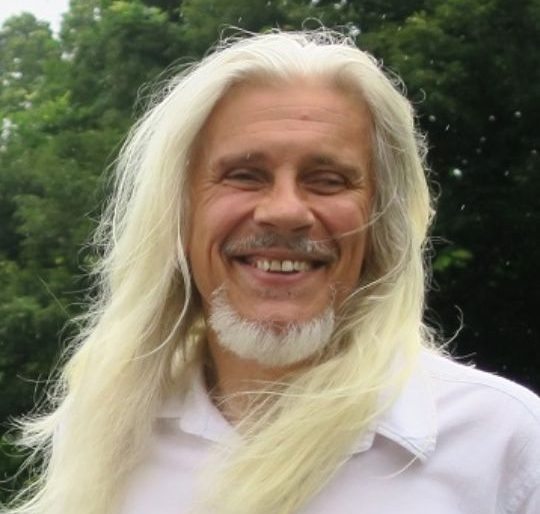
- Affiliation
- Institute of Environmental Radioactivity Radioecological Transfer and Effects Division, Forest Radioecology
- External Link
Profile
I received my Ph.D in Biology (Radiobiology) in 1995 from Institute of Experimental Pathology, Oncology and Radiobiology of National Academy of Sciences of Ukraine for research on radiobiological aspects related to the Chernobyl fuel particles. Currently, my research focuses on the radiocesium contamination of Fukushima forests and radiation effects to the forest species.
Main Focus of Research
- Identification and quantification of the main fluxes of radiocesium in the typical forest ecosystems of Fukushima
- Modelling the long-term redistribution of radiocesium in Fukushima forests
- Identification of the radiation effects to the plant species, formulation of the dose-effect dependencies, clarification of the mechanisms of the radiation effects
Fields of Research
Forest radioecology, radiation effects, dosimetry
Keywords
Fukushima accident, Forest radioecology, Radionuclides, Radiocesium, Radiation effects, Dosimetry
Research Overview
Before joining IER in February 2014, for almost 25 years I was an employee of Ukrainian Institute of Agricultural Radiology of National University of Life and Environmental Sciences of Ukraine. My last position was the Head of laboratory of radioecological monitoring, mathematical modelling and dosimetry. My researches covered a wide range of the problems related to the consequences of the Chernobyl accidents, such as characterization of the physical-chemical forms of the Chernobyl radionuclides, investigation of the Chernobyl hot particles, studies of the radionuclides behavior in the forest ecosystems, modelling the doses to human and biota, the radionuclides transfer during the wildlife fires, morphological and cytogenetic effects of radiation to the plant species, the radionuclides migration in soil etc.
In February 2014, in the close jointresearch with other researchers of IER, I started research on the radiocesium fluxes in the typical forest ecosystems of Fukushima Prefecture. For this purpose, the experimental site was equipped in the Japanese Cedar forest near Yamakiya. The extensive monitoring program has been performed at that site since May 2014. With time, we extent our monitoring program to other tree species by establishing the new sites in the radioactive contaminated Fukushima forests, and to the moment we have 5 experimental sites and the observation area in the close vicinity to the FDNPP.
I have characterized the radiocesium distribution in the forest species by the end of the early stage after the accident, and have provided the first estimates of the fluxes which will govern the further long-term redistribution of radiocesium in the forest ecosystems (Yoschenko et al., 2016a).
I also identified the radiation effects to the plant species in Fukushima Prefecture. I found that young populations of Japanese red pine are very radiosensitive: as a response to the chronic radiation, the severe morphological abnormalities (cancellation of the apical dominance) are formed in this species. Based on the results of the large-scale observations in the Fukushima zone, I reliable related the probability of the abnormality formation with the dose rate to the tree, and formulated the dose-effect dependence (Yoschenko et al., 2016b).
Currently, I continue the above-mentioned researches. Based on the new monitoring results, we demonstrate the dynamics of the radiocesium distributions in the forest ecosystems, and provide the more accurate estimates of the radiocesium fluxes, in particular, the root uptake flux. We also carry out the analysis of the stable cesium distribution and fluxes in the studied ecosystems, which will give the essential information for prediction of the long-term radiocesium dynamics in the forests. We also work on the development of the field radiometric method for assessment of the radiocesium contamination levels in Fukushima forests.
As a continuation of the radiation effect study, we are elaborating the research plan for the in-depth cyto- and epigenetic research aimed on clarification of the mechanism of formation of the morphological abnormalities in Japanese red pine.
A few words
In Fukushima Prefecture, the extensive decontamination has been performed at the residential and agricultural lands in order to prepare for the population return to the evacuated towns and villages. However, only the limited areas of forests were decontaminated, and the large-scale decontamination of forest is not planned for the future. Therefore, the strategy of forestry at the radioactive contaminated territories should be developed. Our results will be very useful in this context because they will bring understanding of the radiocesium long-term dynamics in Fukushima forests. Our results will hopefully contribute to the radioecology in general, especially in the currently developing field of radiation protection of non-human biota.
Personal Interest
Travels, Sightseeing, Culture, Fishing
Curriculum vitae
- 1989
M.S. in Physics, Taras Shevchenko Kiev National University
- 1989-2014
employee of Ukrainian Institute of Agricultural Radiology of National University of Life and Environmental Sciences of Ukraine (engineer, junior researcher, researcher, senior researcher, leading researcher and head of laboratory)
- 1995
Ph.D. in Biology (specialty: Radiobiology), National Academy of Sciences of Ukraine
- 2014
Project professor at Institute of Environmental Radioactivity, Fukushima University
- 2020
Professor at Institute of Environmental Radioactivity, Fukushima University
- 2025
Vice Director of Institute of Environmental Radioactivity, Fukushima University
Awards
- 2011
High Achiever of Agrarian Education and Science, awarded by Ministry of Agrarian Policy and Food of Ukraine for the works for support of agriculture at the radioactive contaminated territories
